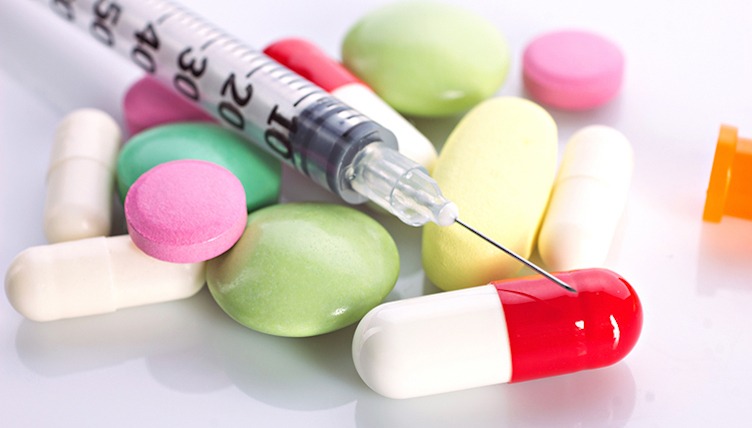The Opportunities in the Oncology Drug Market
The oncology sector is the largest therapeutic sector in the pharmaceutical industry. So what is in store for the global oncology market?
Total spending for oncologics and supportive care worldwide is expected to exceed $147 billion by 2021. With projected growth of 6% to 9% annually, spending across the oncology therapy area will likely outpace the 4% to 7% annual growth for the overall pharmaceutical market.
Inside the oncology drug market
A recent report by QuintilesIMS, Global Oncology Trends 2017: Advances, Complexity and Cost, shows the promise and current strength of the global oncology drug market. During the past decade, advances in personalized medicine and immuno-oncology have fueled a major shift in treatment of cancer. Since 2011, 68 novel therapies have been approved across 22 cancer indications globally. These developments have led to more options as well as greater access and improved outcomes for patients—especially for those individuals with metastatic disease, according to the report.
In addition to the recent wave of newly launched therapies, the late-stage oncology pipeline is robust with 631 unique molecules in development, a 7.7% increase from the 586 oncology molecules in advanced-stage clinical research a year ago. Of this, the late-phase oncology pipeline includes 278 biologic therapies, including 15 gene therapies,133 new monoclonal antibodies (mAbs), and 14 biosimilars of existing mAbs. The late-phase pipeline also includes 82 potential vaccines for a wide variety of tumor types. Other noteworthy items relate to research cycle times and the number of companies participating in the oncology sector. During the past five years, clinical development has become more efficient with shortened research-cycle times, particularly within Phase III trials for new cancer medicines, according to the QuintilesIMS study. The number of companies with late-phase oncology molecules has risen slightly since May 2016, from 511 to 544.
“The launch of multiple novel agents, coupled with increasing awareness and focus on cancer prevention, and emphasis on early diagnosis, have contributed to improved outcomes and a reduction in mortality rates for many of the major cancers over the past decade,” said Murray Aitken, senior vice president and executive director of the QuintilesIMS Institute, in commenting on the market.
On a market basis, global spending of oncology therapeutics and supportive care drugs increased to $113 billion in 2016 from $107 billion in 2015. The total global cost of cancer medicines rose at a constant annual growth rate (CAGR) of 8.7% during the past five years. That marks a noticeable increase compared to the 4.9% growth recorded between 2006 and 2011. Total spending for oncologics and supportive care worldwide is expected to exceed $147 billion by 2021. With projected growth of 6% to 9% annually, spending across the oncology therapy area will likely outpace the 4% to 7% CAGR for total global spending on medicines during the same period.
The report points out that the oncology pipeline is robust, both in terms of new drug candidates and expanding uses for existing therapies. The pipeline of oncology drugs in clinical development has expanded by 45% during the past 10 years. The report points out that using predictive biomarkers has enabled researchers to identify sub-populations within cancer types. This capability has driven an increase in the number of personalized medicines targeted for specific cancer populations. Trials using biomarkers to predict patient response are gaining increasing significance with nearly 11% of current late-phase trials using biomarker-based segmentation. Eighty-seven percent of treatments in the late-stage pipeline use targeted therapies, which include small-molecule protein-kinase inhibitors and biologic monoclonal antibodies.
The two approved PD-1 inhibitors, Bristol-Myers Squibb’s Opdivo (nivolumab) and Merck & Co.’s Keytruda (pembrolizumab), have spawned more than 135 clinical trials for additional indications across 30 tumor types and are both strong-selling drugs for the companies. Opdivo had 2016 sales of $3.77 billion and is approved for multiple cancer indications. In the US, Opdivo is indicated for treating BRAF V600 mutation-positive unresectable or metastatic melanoma and BRAF V600 wild-type unresectable or metastatic melanoma as a single agent; unresectable or metastatic melanoma in combination with Bristol-Myers Squibb’s Yervoy (ipilimumab); metastatic non-small cell lung cancer; advanced renal cell carcinoma; classical Hodgkin lymphoma; recurrent or metastatic squamous cell carcinoma of the head and neck; and locally advanced or metastatic urothelial carcinoma. Keytruda (pembrolizumab), an anti-PD-1 therapy, for certain patients with locally advanced or metastatic urothelial carcinoma, a type of bladder cancer. Keytruda is one of Merck’s top-selling drugs with 2016 sales of $1.4 billion. The drug is approved for the treatment of patients with locally advanced or metastatic urothelial carcinoma, a common form of bladder cancer, who are ineligible for cisplatin-containing chemotherapy. Keytruda is also approved for the treatment of patients with locally advanced or metastatic urothelial carcinoma who have disease progression during or following platinum-containing chemotherapy or within 12 months of neoadjuvant or adjuvant treatment with platinum-containing chemotherapy. Keytruda is also approved in the US for treating unresectable or metastatic melanoma, metastatic non-small cell lung cancer, recurrent or metastatic head and neck squamous cell carcinoma, and refractory classical Hodgkin lymphoma.
Reflecting the increased importance of biomarkers in drug development, in May 2017, the US Food and Drug Administration (FDA) approved a biomarker for Merck & Co.’s Keytruda (pembrolizumab), marking the first time the agency has approved a cancer treatment based on a common biomarker rather than the location in the body where the tumor originated.The approval was for the treatment of adult and pediatric patients with unresectable or metastatic solid tumors that have been identified as having a biomarker referred to as microsatellite instability-high (MSI-H) or mismatch repair deficient (dMMR) This indication covers patients with solid tumors that have progressed following prior treatment and who have no satisfactory alternative treatment options and patients with colorectal cancer that has progressed following treatment with certain chemotherapy drugs. MSI-H and dMMR tumors contain abnormalities that affect the proper repair of DNA inside the cell. Tumors with these biomarkers are most commonly found in colorectal, endometrial and gastrointestinal cancers, but also less commonly appear in cancers arising in the breast, prostate, bladder, thyroid gland and other places. Approximately 5% of patients with metastatic colorectal cancer have MSI-H or dMMR tumors.
Other noteworthy immuno-oncology drugs include Roche’s Tecentriq (atezolizumab), a PD-L1 inhibitor, which was approved in May 2016 for bladder cancer and in October 2016 for non-small cell lung cancer. It is in trials for breast and renal cell cancer. Merck KGaA’s and Pfizer’s Bavencio (avelumab) was approved in March 2017 for metastatic Merkel cell carcinoma, a rare and highly aggressive type of skin cancer. It has also been granted priority review by the US Food and Drug Administration (FDA) in February 2017. AstraZeneca’s PD-L1 inhibitor, Imfinzi (durvalumab) is also in late-phase development and has an FDA breakthrough therapy designation for PD-L1+ bladder cancer.
The immuno-oncology drug sector represents a new course of treatment in cancer. In tumors that overexpress PD-1, treatment with these agents stimulates a patient’s own immune system to fight the cancer. These agents are associated with durable response in multiple cancer types, according to the QuintilesIMS study. Although most PD-1 and PDL-1 agents are in development for solid tumors, development for hematologic malignancies is increasing. In the case of advanced melanoma, several novel therapy classes, including PD-1 inhibitors, BRAF inhibitors, MEK inhibitors and anti-CTLA4 have launched in the past five years—tripling the number of treated patients.
Both clinical trial design with targeted approaches and expedited regulatory mechanisms have also contributed positively to advancing oncology drug candidates. Trial duration and average enrollment have declined highlighting shifts in trial design and om patent filing to approval was 9.8 years, down from 10.25 years in 2013. A favorable regulatory environment has helped drive this acceleration. Among the changes are: the FDA breakthrough therapy designation, introduced in 2012, as well as other expedited development and review methods adopted by the FDA. Those include accelerated approval, priority review, and fast track designation. Nearly 70% of the drugs approved in 2015 were designated in one or more expedited categories, notes the study.





